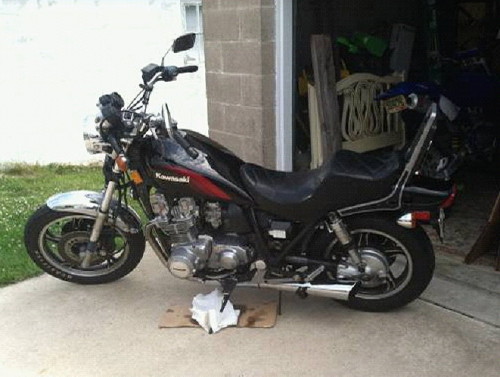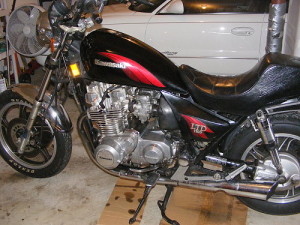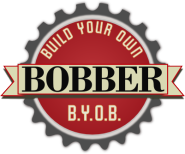1984 Kawasaki 1100 LTD for sale. The bike needs a side cover gasket, easy to get to. Also needs front turn signals. Other than that it’s good. $700.00 cash or trade. It runs and the clutch is good.

That was the ad that caught my eye. Using ‘Search Tempest,’ which lets you search Craigslist nationwide, I had been scouting bikes within 100 miles for several weeks, and while I went back and forth between this one and several ‘category 1’ bikes—easy builds with lots of available aftermarket parts—there was something about this Kawasaki 1100 that had ‘Project’ written all over it. Better yet, it was in my town, just minutes away.
I emailed the owner thinking I’d just be right over with my cash to pick up the bike that day (…patience is not my strong suit when it comes to bikes). It was several days before I got an email back. The bike was still available, he said, but now it also needed a new battery and he had the flu, so it would be a few days before he’d be up and about to pick up a new one. More waiting.
Panicked that the bike was gonna get away or that he was just stringing me along while he had another hook on the line, I contacted him from a second email address to see if he gave that the same response (…yeah, I’m not proud, but sometimes you have to resort to wily measures, especially on Craigslist). Eventually he got back to me on my original email, and although he still hadn’t been out to get a new battery, with a snowstorm on the way, I pressed him to let me come over and have a look.
The battery issue actually gave me some leverage to negotiate, and I was able to close the deal for $550—$150 less than his original price. Oh yeah. You’re coming home with me.
Why this was the bike
My criteria for choosing my project bike was simple and straightforward. This being my first try, I didn’t want to get hung up with a ‘category 3′ bike that would require a high level of expertise and metalworking skills. Although I’ve done a lot of tinkering with my bikes over the years, I didn’t want to get in over my head. Craigslist already has too many ads that go like this:
“I bought this bike and wanted to build a café, bobber, chopper, whatever, and I no longer have the time.”
If the ad has a pic, it shows the bike in a partially disassembled state with the disclaimer, “I think I have most of the parts.”
I don’t want my bike and me to become another bobber statistic.
I also didn’t want to do a bolt-on bobber—a bobber built with a kit—on the excuse that I was getting bored, ran out of time or got lazy. There’s nothing wrong with a bolt-on kit in my opinion, except that they can be a bit rich for my wallet. Besides, I wanted something that would challenge me to get creative and keep my interest in the project start to finish.
I wanted a bike with guts and size. I also wanted something cool because it was different, but not so different that it became overly difficult to manage as a project build. I wanted an older Japanese bike. Something that brings back memories of back in the day. Finally, I wanted something fast.
I t took a lot of research and looking until I decided on the 1984 Kawasaki ZN1100 LTD. This bike was a monster in its day and can still outrun most standard cruisers today. It’s big and a bit heavy, so it won’t fly thru the twisties but it will run great in a straight line. The four head pipes sticking out the front of the motor continue to look awesome.
t took a lot of research and looking until I decided on the 1984 Kawasaki ZN1100 LTD. This bike was a monster in its day and can still outrun most standard cruisers today. It’s big and a bit heavy, so it won’t fly thru the twisties but it will run great in a straight line. The four head pipes sticking out the front of the motor continue to look awesome.
If you aren’t familiar with the ZN, that’s cool because neither was I. The ZN is basically a shaft-driven KZ. Yes, bobbers are usually chain driven. A shaftie will be different (and require less maintenance). There are a few shafties out there that have been bobbed, e.g., some early Goldwings make cool bobbers, in my opinion. There aren’t many ZN bobbers in the world, since ZNs were only manufactured in 1984 and 1985…which added to the appeal.
I also wanted a bike with decent mechanics. My bike has 30,000 highway miles. It was taken care of by the previous (first) owner but has been neglected and won’t start for several reasons, none of which are major motor demons. It’s a solid bike and that’s important on this build. This bike will be gone over completely—cleaned, repaired, updated, whatever. This build will not be a dirtbag bike and it won’t be a show bike. It will be a reliable, solid, one-of-a-kind bobber that looks cool and goes when I want it to go.
At least that’s what I picture in my dreams.
Next: Finding parts for old bikes
